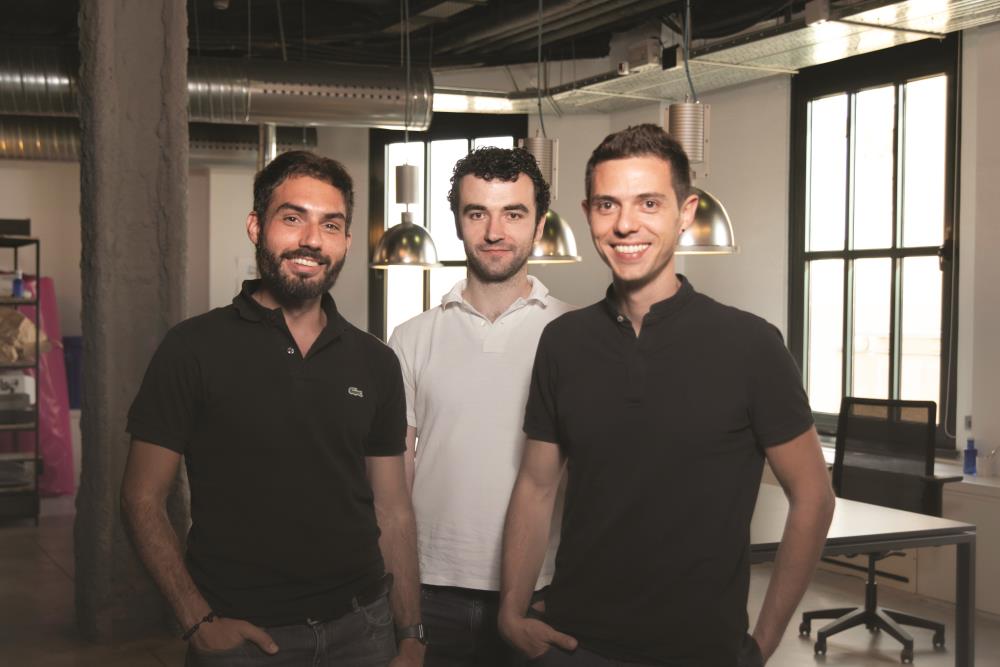Tech Startup Teltoo Can Kill the Spinny Thing
The company helps live video streamers handle bandwidth bottlenecks
Eric Peterson //May 17, 2019//


Tech Startup Teltoo Can Kill the Spinny Thing
The company helps live video streamers handle bandwidth bottlenecks
Eric Peterson //May 17, 2019//

TECH STARTUP: Teltoo
Where: Boulder
Website: teltoo.com
Founded: 2016
Initial Lightbulb: CEO Pablo Hesse co-founded Teltoo in Madrid to help alleviate the bottlenecks for video streaming. “One of the problems with live streaming is bandwidth,” Hesse says. That translates to inferior quality to broadcast television.
After discussing the issue with video streaming players in Spain, he found that most streams with more than 100,000 viewers had problems and deployed the company’s beta solution with local operators.
In 2016, Hesse connected with Liberty Global via the Techstars program in London and subsequently participated in CableLabs’ UpRamp accelerator in Louisville.
After Hesse got a taste of the Rockies, he moved Teltoo from Spain to Colorado in 2018. “In very little time, we had deals with billion-dollar companies,” says Hesse of deployments with Liberty Global in Europe and Telefonica in Latin America. “We met the right people. Before moving to Colorado for the program, we knew very few people.”
He sees Colorado as the right place for startups in video streaming. “I would say that there are a lot of things happening in Colorado with video streaming,” he says, highlighting the presence of Comcast, CenturyLink and Level 3. “It’s the right place to be right now if you have a company in that space.”
Now based in Boulder full-time, Hesse is overseeing a technical office in Madrid while looking to hire three or four operations and marketing employees at the headquarters in Colorado.
In a Nutshell: “What if, instead of connecting all those devices to the servers, we connected all those devices to each other?” Hesse says. “We call it ‘decentralized video streaming.’”
He says Teltoo’s technology connects devices in a peer-to-peer network and optimizes streaming quality by locating the best source in either a content delivery network (CDN) or peer device.
“We amplify the bandwidth that’s available,” says Hesse, noting that Teltoo’s system can offload as much of 75 percent of the data from a CDN, and it’s especially effective for streams with big audiences. “More viewers is better for us.”
And it allows for better streaming to more people without investing in infrastructure, Hesse adds. A stream’s bitrate is 16 times more stable with Teltoo, making for higher quality and less buffering.
One challenge is selling multinational companies on the idea of working with a 10-employee startup. “Choosing a startup to manage all your events is risky,” Hesse says.
Nonetheless, companies like Liberty Global, the largest broadband provider outside of the U.S., are choosing Teltoo. “Teltoo helps live video streamers like Liberty Global better handle bandwidth bottlenecks by sharing content at the edge between viewers rather than pulling it from CDNs and across transit networks,” says Neil Illingworth, Liberty Global’s director of advanced technology and innovation. “Scalability is especially important and, in fact, the more viewers we have watching and seeding or sharing content using Teltoo, the more effective their solution should become.”
“We’ve all been in that situation where we’re watching Netfilx and we get that dreaded buffering spinny thing,” adds Scott Brown, executive director of UpRamp and CableLabs’ VP of ventures and outreach. “Teltoo kills that spinny thing.”
The Market: “The CDN market is growing a lot,” says Hesse, describing Teltoo as a tool for both CDN operators and media companies. “Instead of using five or six [CDNs], you can use two with Teltoo.”
Financing: Liberty Global provided Teltoo an undisclosed amount of seed funding, and the company is currently pursuing a Series A round of venture capital. Hesse says the target is $3 million closing later in 2019. “We want to use those funds to target more areas in the United States,” he says.

























